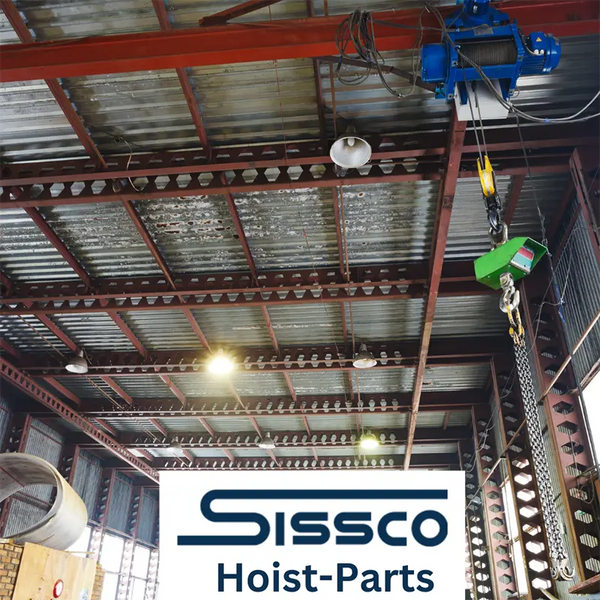
Selecting the wrong manual hoist—whether a chain fall or a come-along—for tasks requiring precision can result in frustrating inefficiencies, unstable load handling, and safety risks. Precision matters greatly, particularly when lifting expensive or fragile items or positioning heavy loads near sensitive equipment. However, operators often mistakenly assume these two manual hoist types function interchangeably, unaware of critical mechanical distinctions that directly affect control accuracy.
Determining which hoist, chain fall or come-along, offers superior precision involves clearly understanding three central factors: gear ratio, load control mechanisms, and load drift prevention capabilities. Operators gain clarity by thoroughly examining each factor, ensuring the correct choice and more secure, precise load handling.
Does Gear Ratio Affect Precision in Chain Falls and Come-Alongs Differently?
Gear ratio fundamentally shapes the degree of precision achievable with each manual hoist. Specifically, gear ratio defines how many handle strokes or chain pulls are required to lift a load a certain distance, directly impacting operator accuracy and ease of control.
- Chain Falls (Higher Gear Ratios): Chain falls typically utilize higher gear ratios, meaning the load moves relatively short distances per pull. This design intentionally prioritizes incremental precision control. Operators can carefully inch the load into exact positions, which is ideal for scenarios requiring meticulous, step-by-step alignment, such as assembling machinery or positioning heavy equipment above delicate components. However, this also means lifting takes longer, demanding patience from operators who require speed.
- Come-Alongs (Lower Gear Ratios): Conversely, come-alongs usually employ lower gear ratios. Operators exert greater force with fewer lever strokes to move the load faster per pull. This benefits tasks needing quicker adjustments or horizontal load pulls. However, the speed comes at the cost of incremental control, as each lever movement produces more pronounced load adjustments. This characteristic can complicate tasks that require minor, careful repositioning and makes come-alongs less intuitive for operators unfamiliar with managing nuanced adjustments.
Understanding this fundamental distinction helps determine the suitability of each hoist based on the specific precision demands of your operations.
How Do Load Control Mechanisms Specifically Influence Precision?
Beyond gear ratio, the internal mechanisms that operators physically use—chains versus levers—directly influence how precisely a load can be controlled.
- Chain Mechanism (Chain Falls): Chain falls allow precise load control through small, incremental movements enabled by pulling individual chain links. Each chain link is an accurate measurement unit, offering operators a natural and intuitive way to make minute adjustments. Operators can stop pulling at exactly the right point, providing highly detailed control during vertical lifts. For example, when positioning a heavy motor for installation, a chain fall enables careful, incremental lowering or raising with minimal risk of overshoot.
- Lever Mechanism (Come-Alongs): Come-alongs use a lever handle that transfers force directly into the hoist mechanism. While this design provides easier control in horizontal pulling applications, precision becomes more challenging. Each lever stroke typically moves the load farther and faster, requiring operators to exercise considerable skill to achieve accurate positioning. Operators attempting small load adjustments with a come-along must carefully control lever strokes to prevent accidental overshoot or unintended drift, particularly problematic for inexperienced users.
Evaluating these mechanical differences clearly impacts operational efficiency and load security, ensuring you select the appropriate manual hoist for the precision your application requires.
Which Manual Hoist Minimizes Load Drift More Effectively?
Precision control also depends significantly on each hoist’s capacity to prevent load drift—the unwanted or accidental movement of the load once positioning is complete. Even minimal load drift can lead to serious safety hazards or damage to nearby equipment, emphasizing the importance of this factor in hoist selection.
- Chain Fall Hoists: Chain falls incorporate automatic braking mechanisms that immediately engage when the chain pulling stops. This built-in brake quickly locks the load position, greatly reducing or eliminating drift risk. Because operators rarely need to manually engage a separate braking action, chain falls effectively minimize load movement, ensuring that the load remains exactly where intended immediately after positioning.
- Come-Along Hoists: In contrast, come-along hoists typically rely on ratchet mechanisms that operators must manually engage to secure the load position. This manual operation introduces a risk of drift if operators neglect or delay fully engaging the brake or ratchet system. The internal ratchet mechanism is also more susceptible to wear, potentially increasing the risk of drift as the hoist ages, especially without regular inspection or part replacements.
Operators choosing between these two manual hoists should clearly consider drift risks. Tasks demanding reliable and instant load positioning typically favor chain falls because their automatic braking provides inherent safety and precision benefits, while tasks prioritizing speed or horizontal pulls may still justify come-alongs with proper operator attention.
Choose the Right Manual Hoist for Precise Load Control
The decision between a chain fall and a come-along for precision handling hinges clearly and directly on mechanical differences in gear ratios, operational mechanisms, and braking systems. With their higher gear ratios, intuitive chain-link controls, and automatic brakes, chain falls deliver consistent and reliable precision control, which is ideal for detailed vertical positioning tasks. Come-alongs, offering lower gear ratios and faster load movements, require greater skill and attention for precise positioning but may suit scenarios requiring quicker or horizontal adjustments.